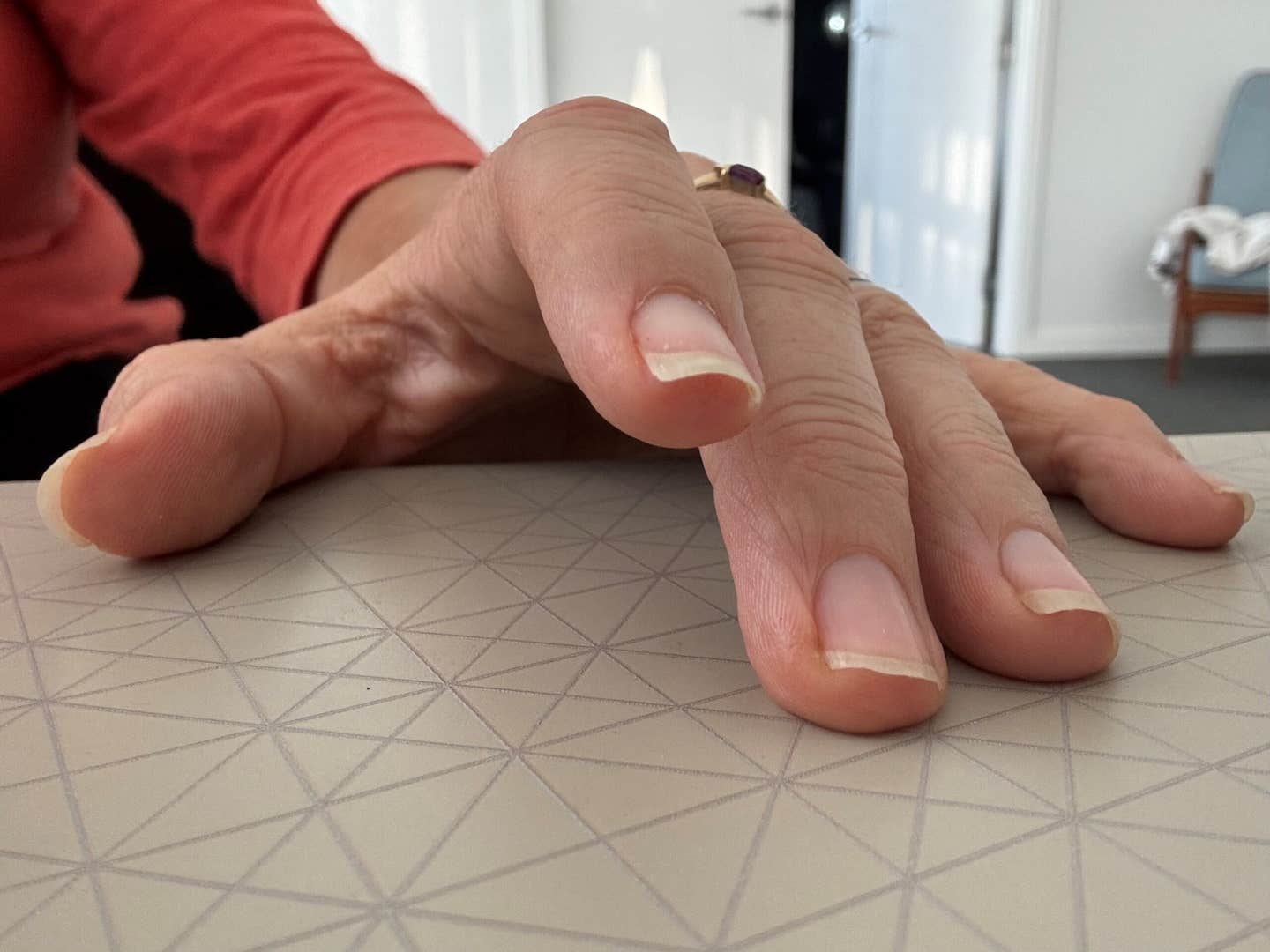Finger-tapping trick can sharpen your hearing against background noise
A simple rhythmic finger-tapping trick can dramatically enhance your ability to understand speech in noisy settings.

Finger-tapping before entering noisy places significantly boosts your speech comprehension. (CREDIT: AusSMC)
Tapping your fingers to a rhythm before you enter a noisy room might seem like a strange ritual. But recent research reveals this simple act can significantly improve your ability to understand speech amidst distracting background noise.
Scientists at Aix-Marseille University found that rhythmic finger-tapping primes your brain to better process spoken language. Their findings, published in the journal Proceedings of the Royal Society B, could offer promising methods for language learning and speech therapy.
Rhythmic Tapping and Your Brain's Ability to Hear
Have you ever struggled to follow a conversation at a crowded cafe or busy social event? French researchers discovered a practical trick: tapping your fingers rhythmically before entering these noisy settings enhances your speech comprehension. This finding builds on the idea that your brain’s motor system—the part controlling physical movements—plays a crucial role in understanding spoken language.
To explore this concept, researchers conducted three experiments involving young adults. Each participant listened to sentences mixed with loud background noise. Their task was simple: write down the words they heard. Before hearing these sentences, participants engaged in rhythmic activities, including tapping fingers at different speeds or saying words aloud. Each experiment tested a unique aspect of how rhythmic movement affects speech understanding.
Finding the Ideal Rhythm for Listening
In the first experiment, 35 participants tapped their fingers to three different speeds—slow, medium, and fast—before listening to noisy sentences.
The researchers discovered that tapping at a medium pace—about two taps per second—led to clearer understanding of the speech afterward. This rate, known scientifically as the "lexical rate," aligns closely with the rhythm naturally found in human speech, approximately 1.8 beats per second.
Related Stories
Why does this happen? According to the scientists, rhythmic finger-tapping helps your brain synchronize with the timing of speech patterns. This synchronization allows your brain to predict speech timing, improving its ability to filter out noise and focus on words.
Physical Movement Enhances Auditory Processing
The second experiment asked whether tapping itself mattered, or if simply listening to a rhythmic beat would have the same effect. Surprisingly, researchers found that participants who actively tapped along—whether or not they heard an external beat—had significantly better speech comprehension. Merely listening passively did not provide the same benefit.
"The motor system is known to process temporal information," the researchers explained, "and moving rhythmically while listening to a melody can improve auditory processing." Their results indicate that the physical act of moving your body is crucial, rather than just hearing a rhythm. Active engagement appears to "prime" your auditory processing centers effectively.
Speaking Aloud Also Boosts Your Listening Skills
In the final experiment, the researchers explored if speaking aloud before listening to noisy sentences would help comprehension. Participants said a random word aloud before hearing sentences masked by background noise. Interestingly, the spoken word did not need to relate to the sentence at all. Merely producing vocal sound beforehand enhanced the listener’s ability to understand subsequent speech.
This finding emphasizes the role of active motor behavior—specifically speech production—in boosting auditory processing. Vocalizing primes the brain similarly to tapping, confirming the connection between speech production and comprehension.
Scientists suggest this happens because speaking involves brain areas closely linked to those used for listening, creating a shared pathway for improved speech perception.
Why Rhythmic Priming Works in Your Brain
Your brain continually tracks timing patterns in speech. When you tap your fingers rhythmically or vocalize words, you activate motor areas that are essential for processing temporal (time-based) information. These motor areas form part of an internal "clock" in your brain, enabling you to predict when sounds like syllables or words will occur. This rhythmic preparation enhances your brain's readiness to interpret incoming speech signals accurately.
Previous studies showed that rhythmically structured speech benefits greatly from rhythmic priming. However, speech in everyday conversation doesn't follow strict timing.
Researchers wanted to test if rhythmic priming helps with natural, non-rhythmic speech. The positive results of their experiments strongly suggest it does, expanding potential uses for rhythmic priming beyond controlled clinical environments.
Implications for Language Learning and Rehabilitation
The implications of this research extend beyond improved conversations at noisy social events. These findings could lead to new techniques in language education and speech therapy. For example, teachers and therapists might incorporate rhythmic tapping into exercises to aid students or patients struggling with language processing. This approach could be especially helpful for individuals with conditions that affect auditory focus, such as attention deficit hyperactivity disorder (ADHD) or hearing loss.
However, scientists emphasize the need for further research before applying this method widely. Participants in these initial studies were young, healthy, French-speaking adults without neurological conditions. Additional research is needed to determine if rhythmic priming effects vary with age, language background, or neurological differences.
Furthermore, the exact brain mechanisms remain theoretical. Although researchers believe motor areas connect directly with auditory pathways to create improved speech processing, this hypothesis requires confirmation through brain imaging studies.
Trying Rhythmic Priming Yourself
Even with these questions unanswered, rhythmic priming remains an accessible tool you can safely test yourself. If you often find yourself overwhelmed by background noise, tapping your fingers or briefly vocalizing beforehand might significantly improve your listening experience. Such simple preparation can make social interactions less stressful, especially in noisy places.
As one of the study's authors remarked, "These findings provide evidence for the functional role of the motor system in processing the temporal dynamics of naturalistic speech." This means your body movements can directly impact how well you hear and comprehend others.
Ultimately, rhythmic priming could be a practical, low-cost solution to enhance communication, particularly for those who struggle in noisy environments. While further studies will expand our understanding, this research provides a compelling reason to keep your fingers tapping.
Note: The article above provided above by The Brighter Side of News.
Like these kind of feel good stories? Get The Brighter Side of News' newsletter.
Rebecca Shavit
Science & Technology Journalist | Innovation Storyteller
Based in Los Angeles, Rebecca Shavit is a dedicated science and technology journalist who writes for The Brighter Side of News, an online publication committed to highlighting positive and transformative stories from around the world. With a passion for uncovering groundbreaking discoveries and innovations, she brings to light the scientific advancements shaping a better future. Her reporting spans a wide range of topics, from cutting-edge medical breakthroughs and artificial intelligence to green technology and space exploration. With a keen ability to translate complex concepts into engaging and accessible stories, she makes science and innovation relatable to a broad audience.



